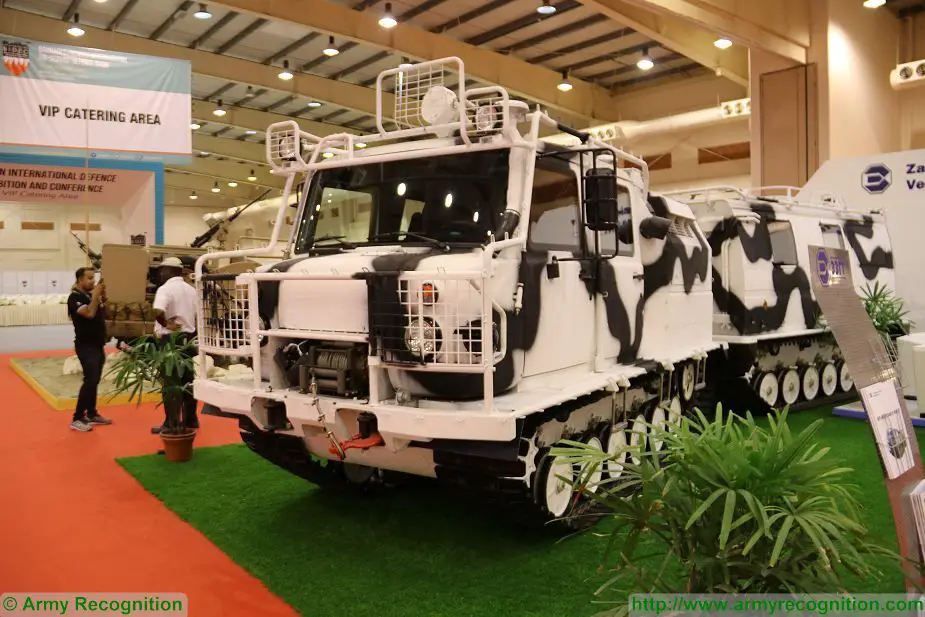The Russian Company Zavolzhsky Crawler Vehicle Plant presents the GAZ-3344-20, latest generation of all-terrain tracked vehicle at BIDEC 2017, the Bahrain International Defence Exhibition and Conference. The GAZ-334-20 consists of two tracked vehicle units linked by a steering mechanism.
 Russian-made GAZ-3344-20 All-Terain Tracked Vehicle at at BIDEC 2017, the Bahrain International Defence Exhibition and Conference.
Russian-made GAZ-3344-20 All-Terain Tracked Vehicle at at BIDEC 2017, the Bahrain International Defence Exhibition and Conference.
The GAZ-3344-20 is designe to be operated in difficult road and climate conditions and used for carrying people and goods over rough terrain outside of public roads and towing trailers as well as for various transportation needs. The crawler can be operated and kept outside of a garage at the ambient temperature of +40 to -50 C°, and in various road & climate conditions, on everything including off-roads, and is capable of overpassing water obstacles.
The GAZ-3344-20 weight is 11 tons, cargo capacity of the first section is 750 kg, the second one is 2,250 kg, it may accommodate 12 persons. The front vehicle is motorized with the Russian-made diesel engine YaMZ-5347-26. The vehicle can run at maximum road speed of 50 km with a maximum cruising range of 450 km. It is also fully amphibious without any preparation and has a maximum speed in the water of 3.8 km/h.
The GAZ-3344-20 is designed for transportation of personnel, cargo and equipment in severe road and climatic conditions. The vehicle can be used for the oil-and-gas industry, geology, geophysics, energy production, search-and-rescue units and special forces.
According to the Company, Russian armed forces have ordered a total of 100 vehicles to be used in the Arctic region. The decision to propose these vehicles to the Russian military was made following the series of Arctic expeditions, including the stand-alone trip from Tiksi to the Kotelny Island (Novosibirsk Islands). The expedition ended in February 2017.














